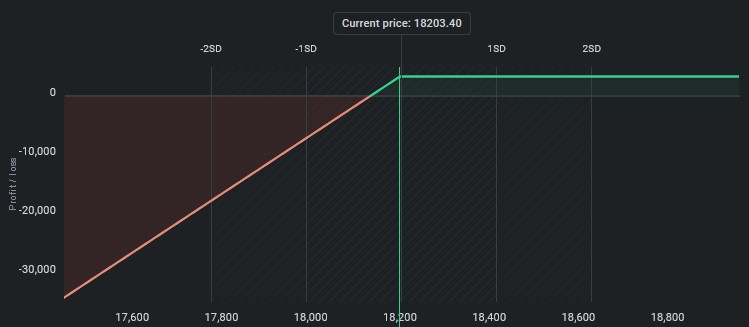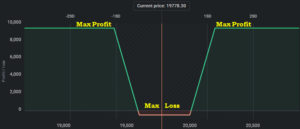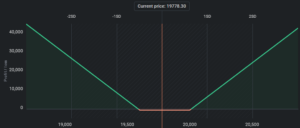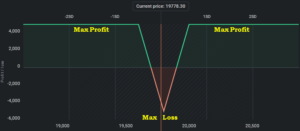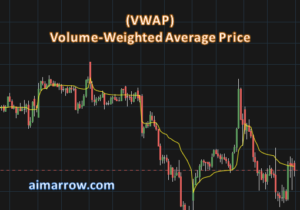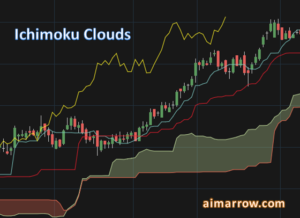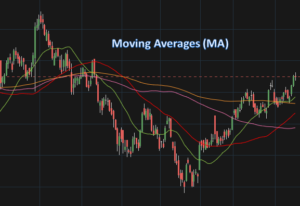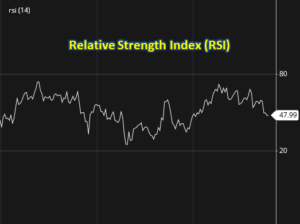Sell Put (Short Put) Options Trading Strategy | Step-by-Step Execution Process, Payoff Graph, Pros & Cons, Adjustments
What is a “Sell Put” Options Trading Strategy?
A “Sell Put” options trading strategy is a bullish strategy that involves selling a put option on a stock or other underlying asset with the expectation that the price of the underlying asset will either increase or remain stable.
When you sell a put option, you are essentially taking on the obligation to buy the underlying asset at the strike price of the option if the buyer decides to exercise the option. In exchange for taking on this obligation, you receive a premium, which is the price that the buyer pays for the option.
The strategy is called “Sell Put” because you are selling a put option, as opposed to buying a put option (which would be a bearish strategy).
Example of a “Sell Put” Options Trading Strategy
Let’s say that you are bullish on XYZ stock, which is currently trading at $50 per share. You decide to sell a put option with a strike price of $45 and a premium of $2.50.
If the price of XYZ stock remains above $45 until the expiration date of the option, then the buyer of the option will not exercise their right to sell the stock to you at $45, and you get to keep the premium of $2.50.
If the price of XYZ stock falls below $45, then the buyer of the option may choose to exercise their right to sell the stock to you at $45, and you will be obligated to buy the stock at that price.
However, since you received a premium of $2.50 for selling the option, your effective purchase price for the stock would be $42.50 ($45 – $2.50), which is still lower than the current market price of $50.
Step-by-Step Process for Executing a “Sell Put” Options Trading Strategy
Here are the steps you would typically follow to execute a “Sell Put” options trading strategy:
- Choose an underlying asset that you are bullish on.
- Determine the strike price and expiration date for the put option you want to sell.
- Find a buyer who is willing to pay the premium for the option you want to sell.
- Sell the put option to the buyer.
- Monitor the price of the underlying asset to make sure it remains above the strike price of the option until the expiration date.
Pros and Cons of a “Sell Put” Options Trading Strategy
Pros:
- Generates income: By selling a put option, you receive a premium, which can generate income for your portfolio.
- Limited risk: Your maximum potential loss is the difference between the strike price and the price you paid for the underlying asset, minus the premium you received for selling the option.
- Can be used in a variety of market conditions: The “Sell Put” strategy can be used in both bullish and neutral market conditions.
Cons:
- Unlimited risk: If the price of the underlying asset falls dramatically, your losses could be significant.
- Potential obligation: When you sell a put option, you are obligated to buy the underlying asset at the strike price if the buyer exercises their right to sell the asset to you.
- Margin requirements: If you sell put options on margin, you may be required to maintain a certain level of margin to cover potential losses.
Payoff Graph for a “Sell Put” Options Trading Strategy
The payoff graph for a “Sell Put” options trading strategy looks like an inverted hockey stick. At expiration, the strategy is profitable if the price of the underlying asset is above the strike price of the option, and the profit is equal to the premium received for selling the option.
If the price of the underlying asset falls below the strike price, the strategy becomes unprofitable, with the losses increasing as the price of the underlying asset continues to fall.
Here is an example of a payoff graph for a “Sell Put” options trading strategy:
Adjustments to the “Sell Put” Options Trading Strategy
Here are some adjustments you can make to a “Sell Put” options trading strategy based on whether you are in a profit or a loss:
Adjustments when in Profit:
- Take profits: If the price of the underlying asset has increased significantly and is approaching the strike price, you may want to consider buying back the put option to take your profits.
- Roll the option: If you still believe that the price of the underlying asset will continue to increase, you can roll the option by buying back the current option and selling a new put option with a later expiration date and a higher strike price, which allows you to collect another premium.
Adjustments when in Loss:
- Cut losses: If the price of the underlying asset has fallen significantly and is approaching or below the strike price, you may want to consider buying back the put option to limit your losses.
- Roll the option: If you still believe that the price of the underlying asset will eventually recover, you can roll the option by buying back the current option and selling a new put option with a later expiration date and a lower strike price, which allows you to collect another premium and potentially lower your effective purchase price for the underlying asset.
Conclusion
The “Sell Put” options trading strategy is a bullish strategy that involves selling a put option on an underlying asset with the expectation that the price of the asset will either increase or remain stable. The strategy can generate income and has limited risk, but also has potential obligations and margin requirements. It can be adjusted based on whether you are in a profit or a loss, by either taking profits or cutting losses and rolling the option. It’s important to have a thorough understanding of the risks and rewards before executing this strategy.
